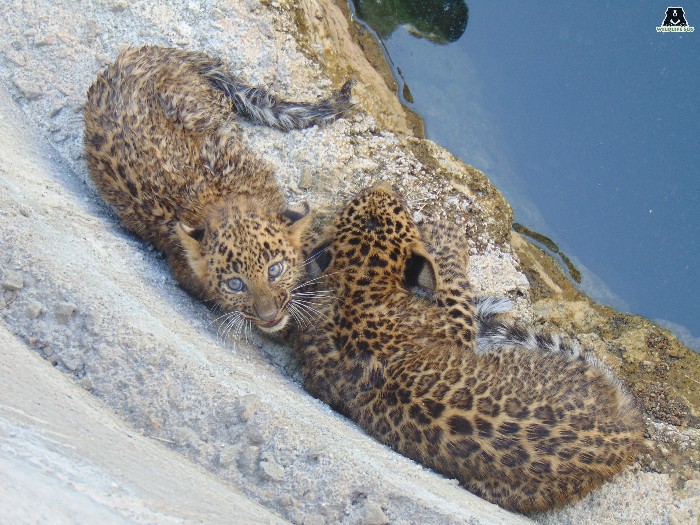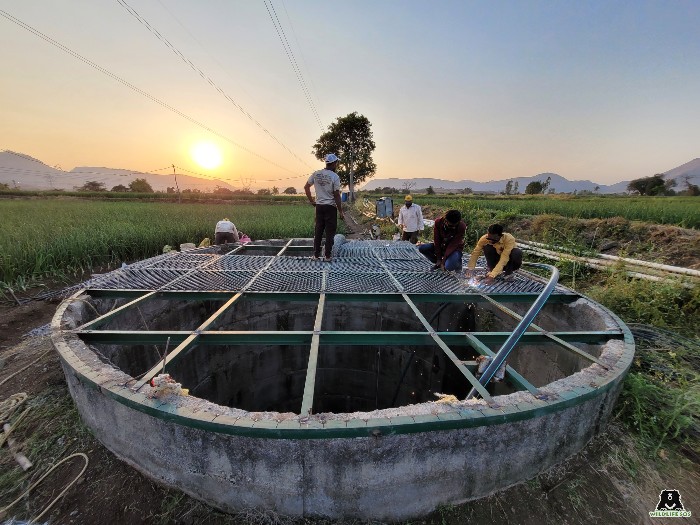In every nook and cranny of India, one encounters marks of India’s past seamlessly blending in with its future. One such token of India’s past that is frozen in time is the groundwater well. These hubs of groundwater and its various incarnations -step wells, bore wells, tube wells – continue to dot the landscapes of India. The most commonly encountered well in India is the open well – an unlined cavity that allows access to the shallowest groundwater. These wells allowed our society to settle away from rivers, provided water when it was needed the most, and irrigated agricultural fields. While we continue to appreciate the historical and practical implications of open wells, we must also acknowledge their pitfalls.
Due to the absence of any boundary or covering, open wells in India take the lives of countless animals and humans. While the exact toll is unknown, there are estimates that thousands perish every year due to accidental falls. Often these wells can be as deep as 50 to 100 feet. Depending on the time of the year, some open wells are wet and some dry. Falling into these open wells is thus, hazardous, leading to injuries or even death by drowning.

Wildlife SOS has rescued hundreds of animals from the grips of open wells including barn owls, civet cats, leopards, and even leopard cubs.
In the state of Maharashtra, the problem of open wells is double-fold. The most common animal that falls victim to these death traps is the leopard, a feline whose numbers are already dwindling. According to the Wildlife Protection Society of India, 95 leopards died in Maharashtra in the first six months of 2021. Open wells only risk adding to this perturbing statistic.
Please Sign This Petition
Your voice makes a difference! Ask Indian officials to take action to cover open wells.
SIGN THE PETITION FOR OPEN WELLSTo date, Wildlife SOS has rescued over 40 leopards from drowning in open wells in Maharashtra. In the beginning months of 2022, we have already rescued 2 more leopards from open wells in Maharashtra. The first leopard was an approximately 7-year-old male who was found struggling to stay afloat in a 50-feet-deep open well in Alkuti village located in Partner subdivision, Ahmednagar, Maharashtra. The second was a 4-year old female leopard trapped in a 70-feet deep open well in Otur, Maharashtra. While both the leopards were safely rescued and released, their fate could have been drastically different. If the rescue team had arrived even minutes later, the leopards would have died.

Determined to make Maharashtra a safe haven for leopards, Wildlife SOS has initiated the Open Wells Conservation Project – a monumental effort to cover the open wells of Maharashtra. This formidable undertaking has commenced after years of field observations and deliberation. Our team found that filling the wells is not an option as most of them still serve the communities as an integral water source. Further, every well did not pose an equal amount of risk to wildlife; The risk depended on the location and surrounding fauna of the well. Thus, our team, identified wells from which we have previously rescued wildlife, while simultaneously studying various factors such as location to identify the risl an open well poses. Our aim is to cover all open wells, starting with the most risk prone wells. This could prevent any animal from falling into it while simultaneously ensuring the well does not lose its function as a water source

Currently, in Phase One of the project, Wildlife SOS aims to cover 40 wells known to be a risk to wildlife. By utilizing skilled welders and durable materials to withstand future weathering, Wildlife SOS aims to cover all these wells with the utmost diligence. Currently, we have funded and covered 3 risk-prone to test out the most effective design.

An integral component of the wells project is gaining the informed consent of well owners. Most wells in Maharashtra exist on private land making it the right of the well owner to refuse to cover his/her well. The Wildlife SOS Field team has been working closely with owners to understand their needs, build a trusting relationship, and raise awareness about the need to cover wells. With the support of the community, Wildlife SOS hopes to get feedback from farmers on the functionality of the design and help in maintaining the coverings. Simultaneously the Wildlife SOS team is working with the forest department to ensure support of the program while also mapping out the regional wells and prioritizing the ones most in need of coverage in the future.

In stage 2 of the project, Wildlife SOS hopes that a larger number of wells in Maharashtra can be covered. We aim to do this by improving designs and testing materials to make covering wells more cost-effective and faster. We aim to collaborate with engineers to perfect a design that helps prevent water evaporation and prevent debris from falling in so water quality is maintained. Such a solution allows wells, an integral part of India’s history, to continue flourishing in the future. It further creates a safer landscape for leopards who are already battling rapid habitat degradation and various other anthropogenic pressures.
With every well covered, a leopard is saved.
Give To Support Our Well Covering Program
Your gift to Wildlife SOS can go directly to cover an open well.
GIVE TO COVER AN OPEN WELLClick HERE to help cover open wells in Maharashtra.





